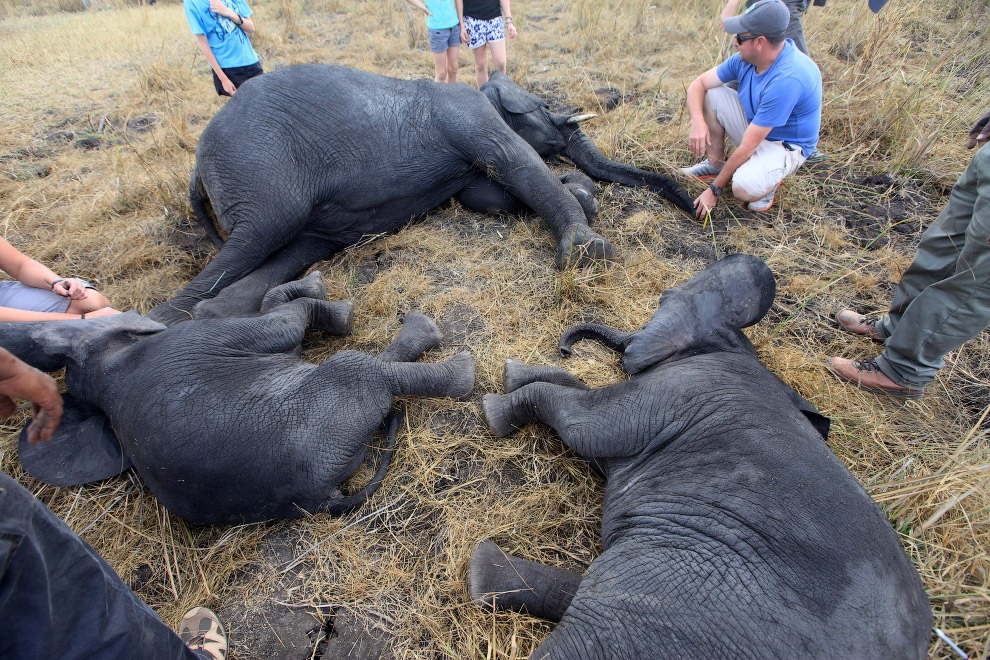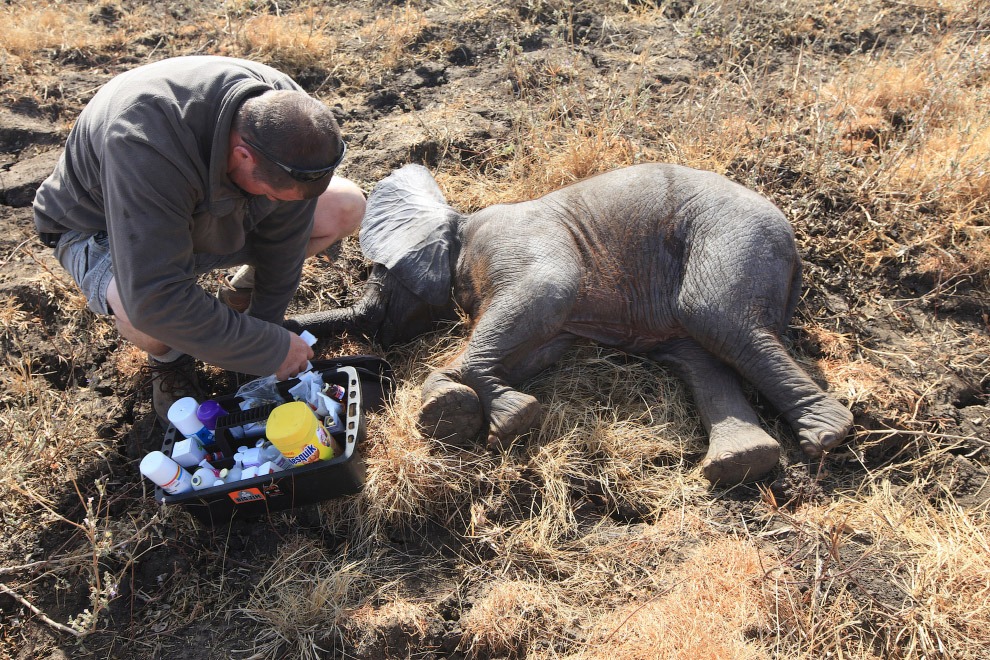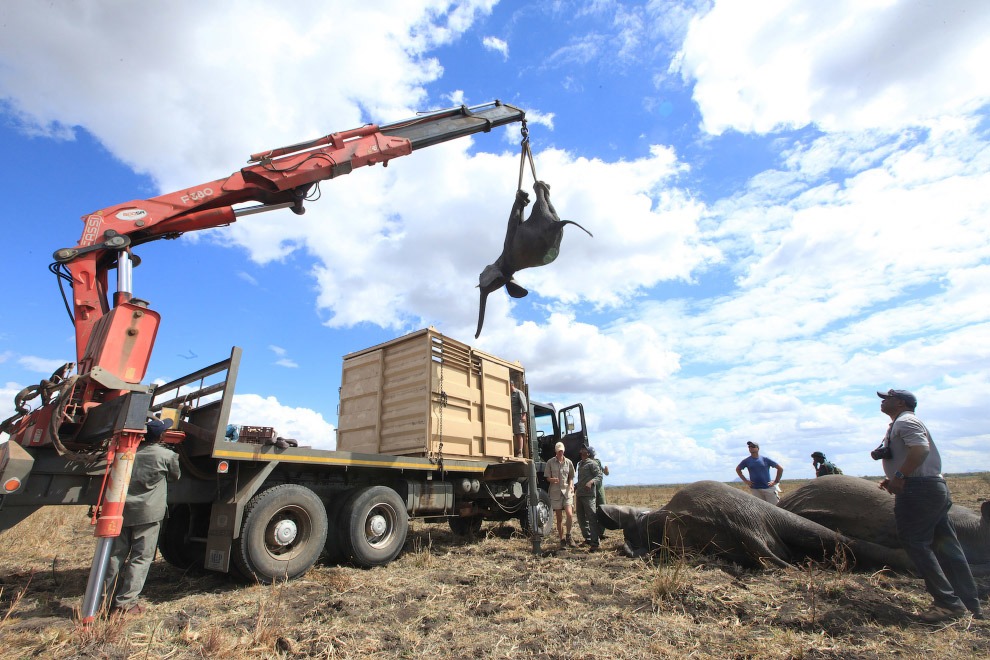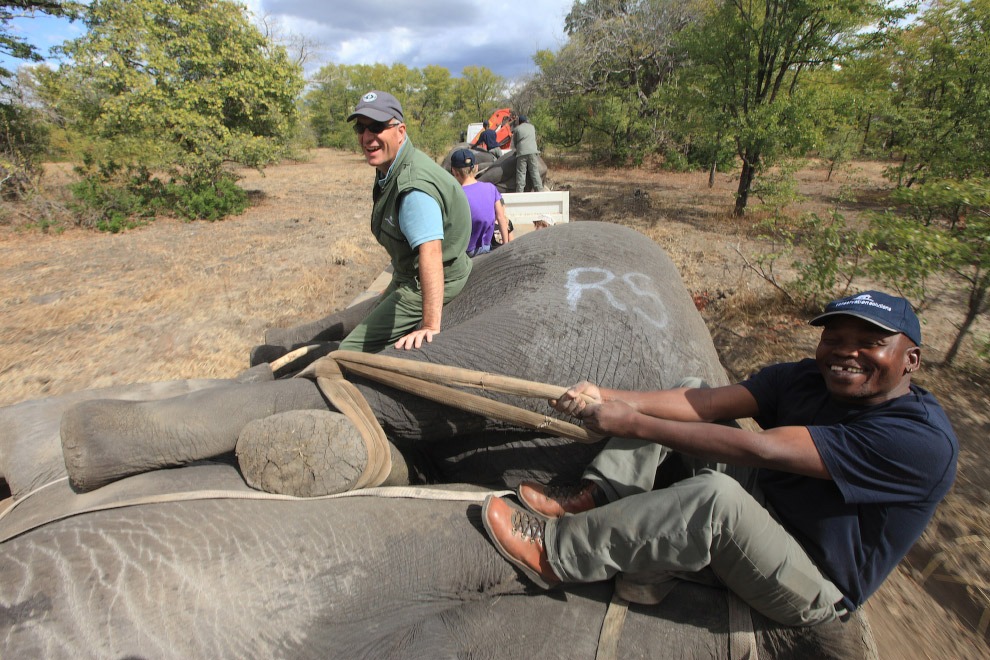On the banks of a river in Malawi, six African elephants lay peacefully on their sides—not due to injury, but as part of a monumental conservation mission. This was the start of a carefully orchestrated relocation effort to transport 500 elephants to a safer home.
As human development continues to expand across Africa, natural habitats are shrinking. In Malawi—one of the most densely populated countries on the continent—wildlife is increasingly pushed out. To protect endangered animals like elephants, conservationists are turning to artificial migration as a proactive solution.

Moving an elephant isn’t easy. It takes a helicopter, tranquilizers, cranes, and specially designed trucks to make it possible. Even young elephants are carefully lifted by hand into vehicles for the journey.

Once sedated, the elephants’ eyes are covered with their own large ears to shield them from harsh sunlight—nature’s perfect sleep mask. For larger elephants, hoisting them requires the use of a crane and secure harnesses. Their legs are gently bound for safety during the lift and transport.

The destination is 300 kilometers (about 186 miles) away—an area with significantly less risk from ivory poachers. The goal is to give these majestic animals a safer, more sustainable future.

As the transport trucks prepare to depart, each elephant begins its journey—not by foot, but by truck—toward a new beginning in a protected habitat.





